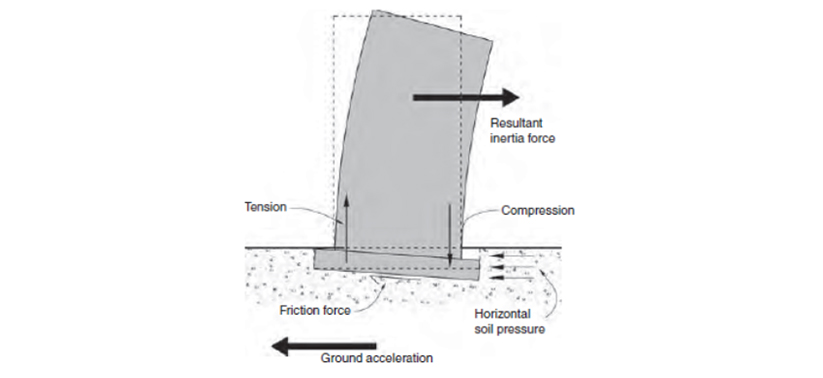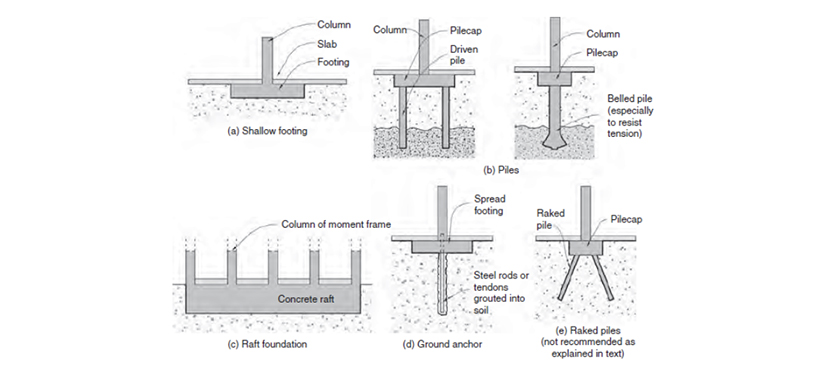
Forces from both the superstructure and ground acceleration act on foundations, making it the most critical part of the structure design in terms of resisting and transferring seismic movement (See fig. 3.2.3-a). There are many factors, including building design, structural choice, and site susceptibility to seismic hazards(as previously described in section 2), that determine the type and structural configurations for foundations.

Figure 7.1 Forces from ground and building acting on the foundation. From SDA Pg. 114.

Figure 7.8 Types of foundations. From SDA Pg. 120.
Shallow Footing
Spread, or strip footings are the foundations of choice for low-rise buildings due to their ease of construction, but they are unable to resist tension forces greater than their self-weight. Individual footings should be interconnected with tie beams or a structural slab to prevent any relative horizontal movement occurring during earthquake shaking.
Piles
Most piles are designed to resist compression and tension forces. The amount of tension-resisting friction between their shafts and the ground depends upon the method of installation. Belled piles or piles socketed into bedrock can also provide tension capacity. Piles penetrate soft layers to provide adequate bearing at depth. Tie-beams between piles for shallow footings are recommended.
Raft
Suitable for medium to high-rise construction. A raft, whose depth can exceed 2 m, integrates gravity-only and seismic-resisting vertical members. It mobilizes the entire weight of the building to resist inertia-induced overturning moments. It spreads concentrated loads onto a larger area and makes the structure tolerant of minor ground subsidence.
Ground anchors
Sometimes used in conjunction with shallow footings, ground anchors are an efficient method for resisting tension forces resulting from overturning. They are also suited to anchoring foundations to steep slopes. Particular care against corrosion by using double corrosion protection is required.
Raked piles
While this system is very stiff against horizontal forces due to it triangulation, it has performed poorly in past earthquakes. Its rigidity and inherent lack of ductility mean raked piles should usually be excluded from seismic-resistant foundations.
Referenced from:
Seismic Design for Architects (SDA)
By Andrew Charleson
Published in 2008
Discussed in:
ARCH 252 Week 6 Lecture (Foundation Systems)

